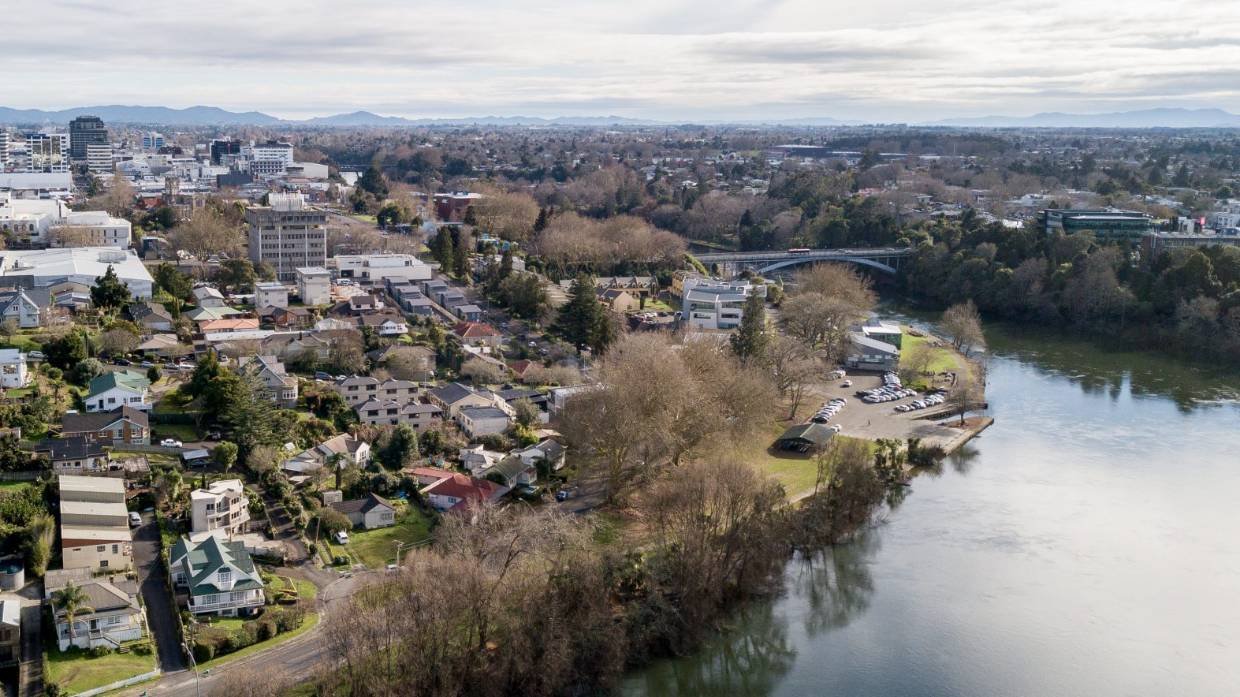Hamilton and surrounding areas 'ready to go pop' with infrastructure development
October 2019
Waikato's billion-dollar infrastructure programme is predicted to transform the region into an economic and social powerhouse that is the envy of the rest of the country.
It is seeing new facilities earmarked for health, arts, education, business and state services that are either under way or planned in the next several years.
Late last week, the Government announced a new $100 million mental health facility in Hamilton to replace the Henry Rongomau Bennett Centre; earth has also been broken on 'The Pa', a new $90m development at the University of Waikato; plans are under way for the new $73.9m regional theatre project in the Hamilton CBD; the inland port project at Ruakura is in the works; and, further south at Waikeria, there is the $750m prison upgrade.
Commercial bricks and mortar aside, there are also the roading projects for State Highway 1, the housing and infrastructure developments at Peacocke in southern Hamilton, Te Awa Lakes in the north, and the Hamilton-Auckland passenger rail service which is set to begin trial runs mid next year.
Hamilton-based Labour list MP Jamie Strange predicted it would see Hamilton become New Zealand's second biggest city in 30 years.
"I feel like we are in a sweet spot - as a region we're really growing up." Hamilton could no longer just be seen as a rural centre based around the dairy industry, he said.
"We are becoming one of the key players in New Zealand and that corridor between Hamilton and Auckland is really the key aspect that underpins the whole thing."
Hamilton East MP David Bennett said Waikato was a fast growing region and that was due to investment from the previous decade.
"We have a growing population, we live very close to Auckland and so geographically we would get a lot of infrastructure investment and that's not unexpected because we're one of the fastest growing regions."
Bennett said the question was what kind of investment the region needed so it could grow as fast as Auckland and challenged the Government to match the funding of the previous government.
"I would debate that this Government has held back on investment in this region and we may be growing, but we could be growing faster and stronger if we had the previous level of investment that the previous government had planned."
Dallas Fisher, chair of regional economic development agency Te Waka, said he knew of one major Waikato construction company that had 37 projects in the works.
The projects would bring jobs and see more businesses come into the region. This was already happening with bed manufacturer Sleepyhead announcing earlier this year that it intends to create a hub in northern Waikato and more recently, Rabobank announcing its intention to relocate to Hamilton.
"These are not happening because of chance," Fisher said. "They are happening because the Waikato is seen as this place that is geographically poised in the middle where all of this infrastructure is about to be finished.
"All of these things that are emerging over the past 20 years are starting to gain traction. My view is that we're in for an exciting next decade."
Fisher "totally" expected other companies to make similar moves. Cambridge was becoming a hotbed of IT companies and he was aware of at least two businesses from the industry who were looking to move into that town. The growth did present challenges around labour and housing. Strange said this was where the Waikato Plan's housing stocktake report released in September would be really valuable.
He predicted the Waikato and Auckland labour markets will start to merge into one as that Hamilton-Auckland corridor strengthens.
"That means that Hamilton businesses like construction businesses can start to draw on some of those people, particularly in the southern part of Auckland. We know about Hamiltonians that commute to Auckland, but I predict we're either going to see Aucklanders either shift south or commute down, even if it's just a couple of days a week."
The projects seemed to be happening all at once. Some of this was to do with the injection of government investment, but also because the region's growing population was getting to a tipping point. Auckland's growth pressures were also pushing people out of the region, he said.
Fisher said Te Waka was working with employers on a labour market study to identify what the region needed and working with tertiary training institutions to plug any shortages.
He was also expecting the Waikato Region Housing Initiative Working Group to announce a strategy in response to the housing stocktake report sometime before Christmas.
"I think we're in for an exciting time. Businesses were doing well and were employing people. When people say to me, 'Dallas the economy's not doing too well', all I say, is 'not for me'. I think the Waikato is ready to go pop."
For more information go to : Hamilton and surrounding areas 'ready to go pop' with infrastructure development
